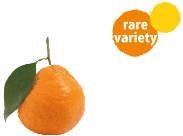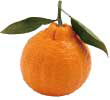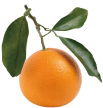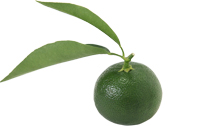Variety of Mikan

Nine different varieties of Mikan go into the production of the liquor
in the Saru no Mato range of Kishu Kankan-ya Mikan Liquor.
Citrus Unshiu

Size (Diameter)approx. 6.5~7 cm
Harvest Season October - February
Sweetness ★★★★★
The word ‘Mikan’ is often used simply to refer to Citrus Unshiu (satsuma). It boasts the title of most common variety of Mikan grown in Japan. Its rich sweetness and low acidity are defining characteristics of the fruit. The Kishu Arida Citrus Unshiu has a thin peel, and is juicy with a high sugar content.
Harumi


Size (Diameter) approx. 7~8 cm
Harvest Season February - April
Sweetness ★★★★☆
The Harumi is characterised by its strong sweet flavour with low acidity and a tender texture. It can be considered a close relative of the Shiranui as it shares the same parent plants.It doesn’t have a long history of cultivation in Wakayama prefecture, and is a relatively new variety in the area. The repeated yield of fruit is quite low, which has resulted in this being considered quite a rare variety.
Shiranui


Size (Diameter) approx. 7~9 cm
Harvest Season February - April
Sweetness ★★★★☆
Written as 不知火 in Japanese, Shiranui can be translated as ‘mysterious lights on the sea’. It is occasionally referred to as ‘Dekopon’ (Registered Trademark), alluding to the bump on one end. It has a distinctive and delicious flavour, with a strong sweetness and a balanced level of acidity. It has recently gained popularity as a fruit of very high quality.
Kiyomi


Size (Diameter) approx. 7~8 cm
Harvest Season January - April
Sweetness ★★★★★
The Kiyomi combines the most delicious aspects of its parent fruits; the body and sweetness of the Citrus Unshiu, and the scent and refreshing acidity of the Trovita orange. Due to it’extremely pleasing flavour, it is popular everywhere, including its place of origin.
Hassaku Orange

Size (Diameter) approx. 8.5~9 cm
Harvest Season January - April
Sweetness ★★☆☆☆
The unique firm and almost crunchy texture, and the refined bitter taste both contribute to the distinct, refreshing character of the Hassaku orange.The fruit has been long cultivated within Wakayama prefecture, and has quietly become a favourite. It may not have a particularly striking sweetness, but has a moderate acidity and can be enjoyed for its slightly bitter taste.
Amanatsu (Sweet Pomelo)

Size (Diameter) approx. 9.5~10 cm
Harvest Season February - June
Sweetness ★★☆☆☆
A bud-variation of a summer Mikan, it is a sweet fruit of the summer months - as the name suggests - and is one of the larger varieties of Mikan. Due to its thick skin, a knife is often required to cut the fruit open before it can be consumed. It has a refreshingly sweet flavour, with moderate acidity, and can be described as ‘bittersweet’.
Yuzu

Size (Diameter) approx. 6.5~7 cm
Harvest Season October - November
Sweetness ★☆☆☆☆
The village of Kishu Kumano has been left unspoiled, and graced with the beauty of nature for as long as anyone can remember. The succulent Yuzu, with its intense scent, can be found deep within the mountain range of Kishu Kumano, where the temperature is prone to severe contrasts of hot and cold. The Yuzu is best enjoyed for its delicate acidity and fresh scent.
Sudachi

Size (Diameter) approx. 3~4cm
Harvest Season August - October
Sweetness ★☆☆☆☆
Sudachi is a Japanese citrus fruit which is closely related to the Yuzu citrus. They are often mistaken as Kabosu, another Japanese citrus fruit, but are smaller in size.
Smooth and refreshing in flavor, a hint of tartness gives an extra aroma to the final touches in your cooking by using the zest and juice.
A sudachi can be equivalent to a lemon as it is rich in vitamin C.
Jabara

Size (Diameter) approx. 7cm
Harvest Season November – December
Sweetness ★☆☆☆☆
Jabara is a fruit originated in Wakayama Prefecture that belongs to the same citrus family as yuzu and kabosu. The name jabara originally means “evil (ja) expelling (bara)” and the fruit has been appreciated as precious blessing. The fruit is rich in flavonoids that are said to be effective to reduce hay fever symptoms.







 Unshiu Mikan Liquor(made only from fruit flesh)
Unshiu Mikan Liquor(made only from fruit flesh) Unshiu Mikan Liquor (made from whole fruit with flesh and peel)
Unshiu Mikan Liquor (made from whole fruit with flesh and peel) Kiyomi Liquor
Kiyomi Liquor Amanatsu Liquor
Amanatsu Liquor Shiranui Liquor With puréed fruit
Shiranui Liquor With puréed fruit Hassaku Liquor
Hassaku Liquor Harumi Liquor With puréed fruit
Harumi Liquor With puréed fruit Yuzu Liquor
Yuzu Liquor Sudachi Liquor
Sudachi Liquor Jabara Liquor
Jabara Liquor Arida orange “Amazake=Rice Milk”
Arida orange “Amazake=Rice Milk” gift box
gift box Collaboration gift box
Collaboration gift box